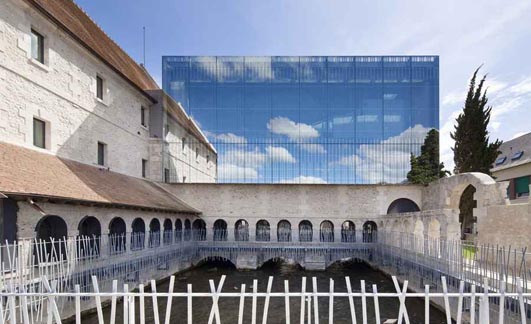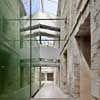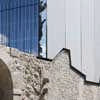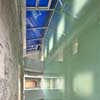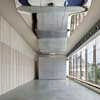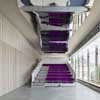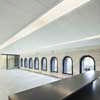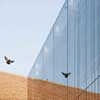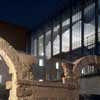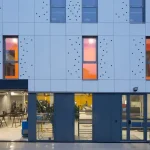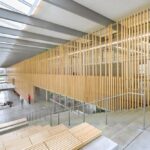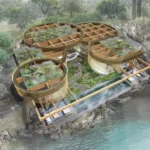Music School Louviers Rehabilitation & Extension, French Historic Building
Music School Louviers : Normandy Building
Historic Normandy building, France design by Opus 5 Architects
17 Sep 2012
Music School Louviers – Rehabilitation & Extension
Design: Opus 5
Rehabilitation and Extension of the Music School Louviers
Opus 5 is a French architecture company, based in Paris, working on both the design of contemporary buildings and on the renovation of important historical edifices mixing patrimony and modernity.
Rehabilitation and Extension of the Music School Louviers
History
The antique convent of the Penitents, in the city center of Louviers – Normandy, is a very exceptional example of “cloister on water”, made of a complex assembly of successive constructions.
The monastery was built between 1646 and 1659 for the Franciscan brethren. There used to be a church in the west and two conventual wings surrounding the central building.
The cloister was sold in 1789 as a national fortune: the conventual parts were transformed into prisons and the church into a tribunal.
In 1827, the church was demolished and the tribunal was transferred in a new part of the edifice.
The prison closed in 1934 while the old south wing started falling down. The building, partially amputated, was reused as a music school in 1990. The remains of the cloister above the river ‘L’Epervier’ are forming an ‘Impressionist’ picture combining stone, vegetation and water in a beautiful harmony. This landscape value has been highlighted and interpreted in the rehabilitation project.
Program
The brief was to offer Louviers a new musical school, modern, functional, attractive and representing the town’s cultural policy. The plan was also to highlight the archaeological heritage and its exceptional site in the heart of the city.
Finally, the project aimed to display a new image of the place and to shed its prison characteristics. The project of the New Musical School of Louviers in the convent of the Penitents – 24 classrooms, a score library and two big orchestra rooms- was raising a certain problematic in term of rehabilitation because of a heavy program implicating substantial interventions: the contemporary extensions have become more important than the existing building.
These were conceived in a very tight plot which led the architects to fill all free spaces, removing the “breathings” and raising these extensions on top of existing walls.
The result is a compact project where the new parts dominate the ancient elements; however, the historical construction is still governing. This is an ‘intimate’ program within each task requires isolation and concentration and will adapt to the compact and intimate character of the project.
South Extension
The second extension, replacing the missing parts of the south wing, exposes its front to the water, towards the cloister and the city. Its incredible position represents the key of the project. It hosts the major element of the program: the big orchestra hall. It represents the emblem of the musical school and composes the landscape with natural elements.
This façade fits in a simple rectangular glass box with chrome stripes reflecting the surrounding environment and fading in the sky. It appears as an echo to music and as a poetic image of the sound. It has two characteristics – sweetness and creativity during the day, warm and glowing at night. This room, by its transparency and its lightness, stands out of its strict and severe environment.
It is a showcase exhibiting the building’s creative life.
Glazed Façade
The North façade is made of laminated glazed panels within the inside layer has been coated with mirror finish (titanium, siliconitride, chrome et siliconitride) A ‘non-crossing’ attachment system holds the glass and leaves the fixing points invisible from outside. The whole set is maintained on mirror polished stainless steel wales of 10 mm sickness and 25 cm depth. The wales are suspended to a mechanically welded steel beam of 450×900 mm used as a duct blower for the orchestra room.
Concrete panels
The frontier façades are made of prefabricated concrete panels of 8 cm thickness/ 180 cm width and of variable heights. They are cut out to follow the surface of the ancient masonry.
These panels are reinforced and attached on the extensions’ metal structure.
Music School Louviers images / information from Opus 5 Architects Paris
Location: Louviers, Normandy, France, western Europe
New Buildings in Normandy
Normandy Architectural Projects
Bayeux Media Library
Design: Serero Architectes
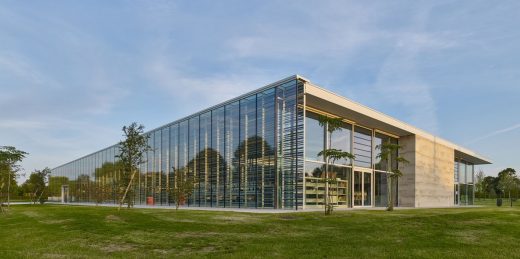
photo © Didier Boy de la Tour
Bayeux Media Library
Garden Tennis Club of Cabourg
Design: lemoal lemoal architectes
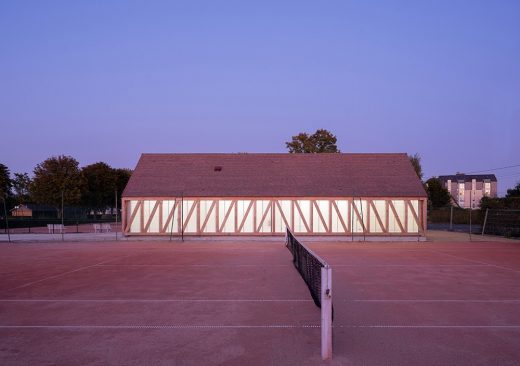
photo © Javier Callejas
Garden Tennis Club of Cabourg
Business incubator, Training centre
Design: h2o architectes
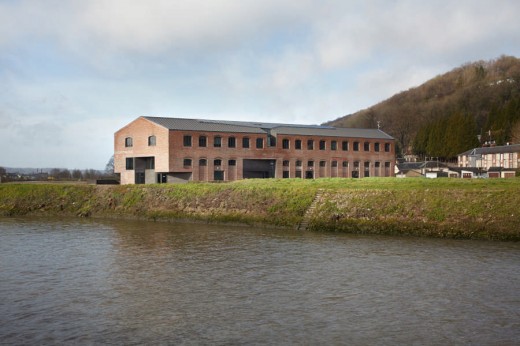
photo : Julien Attard
Business Incubator Training Centre in Normandy
La Luciole France, Alençon, Normandy, France
Design: Moussafir Architectes
La Luciole Normandy Auditorium
New Buildings in France
French Architectural Projects
French Architect Offices – design firm listings
Paris Architecture Tours by e-architect
Northern French Buildings on e-architect – selection:
Mantes-la-Jolie Aquacenter, nr Paris, France
Agence SEARCH
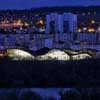
photo © Michel Denancé
Aquacenter France
Louvre Lens Museum
SANAA / Imrey Culbert / Catherine Mosbach
Louvre Lens Museum
French Architecture – Selection
Limoges concert hall
Design: Bernard Tschumi Architects
New General Building of Council of Europe
Art & Build Architect
Comments / photos for the Music School Louviers Renovation – Normandy Architecture page welcome

